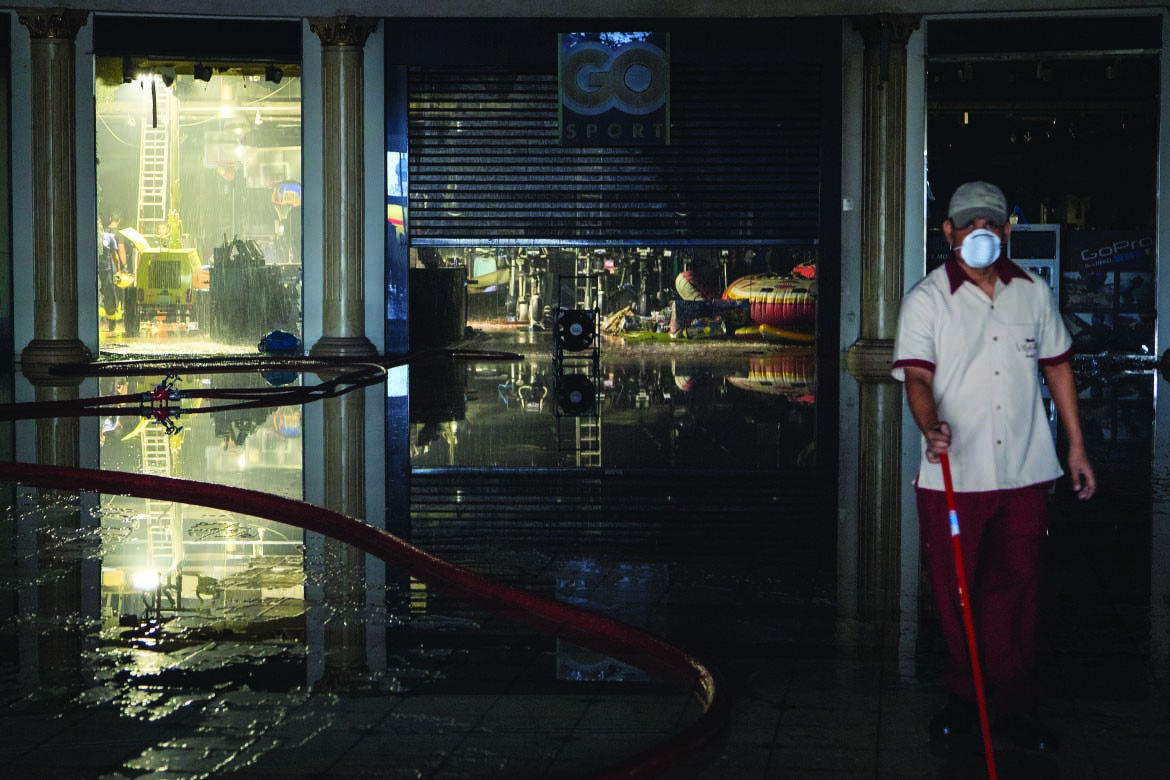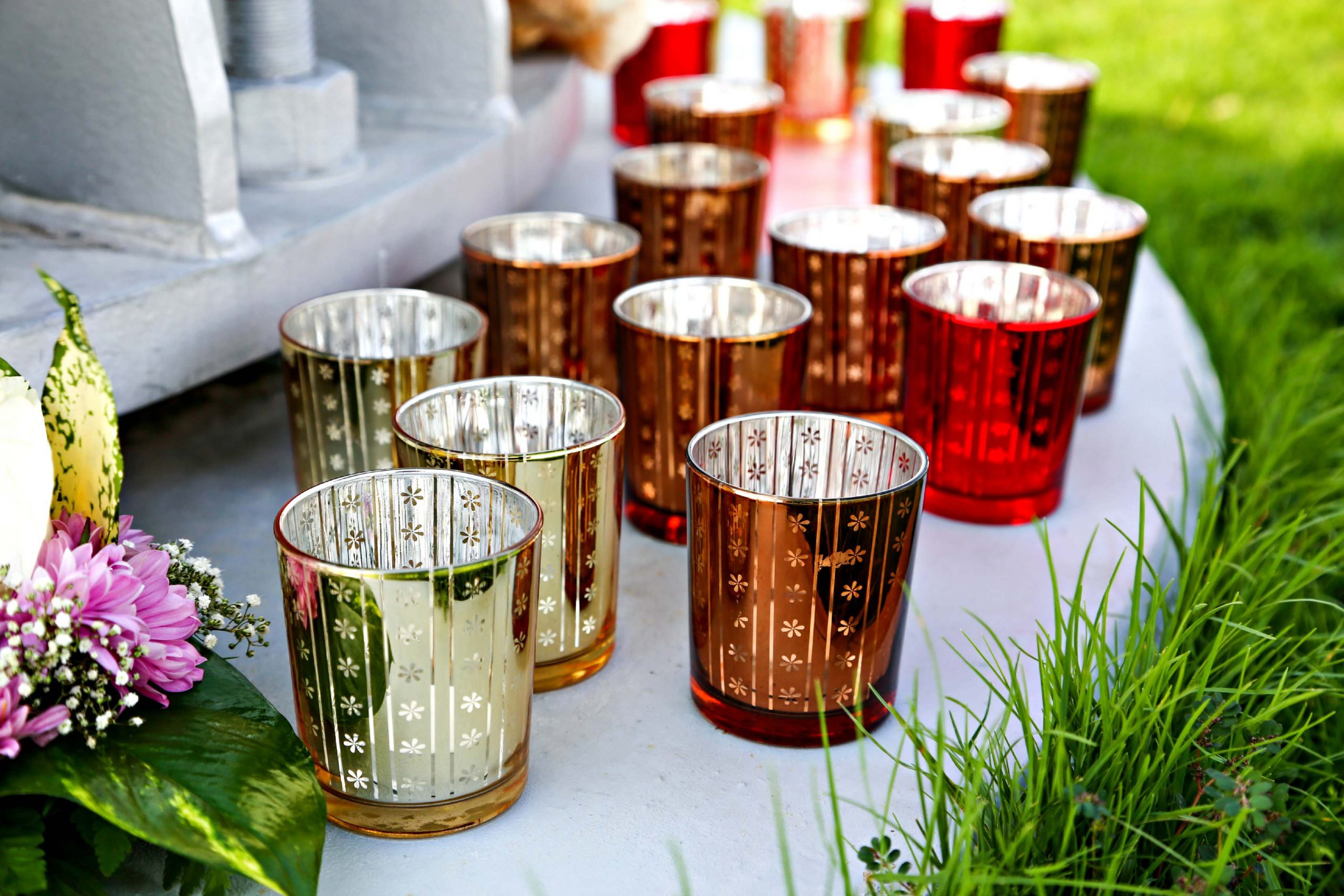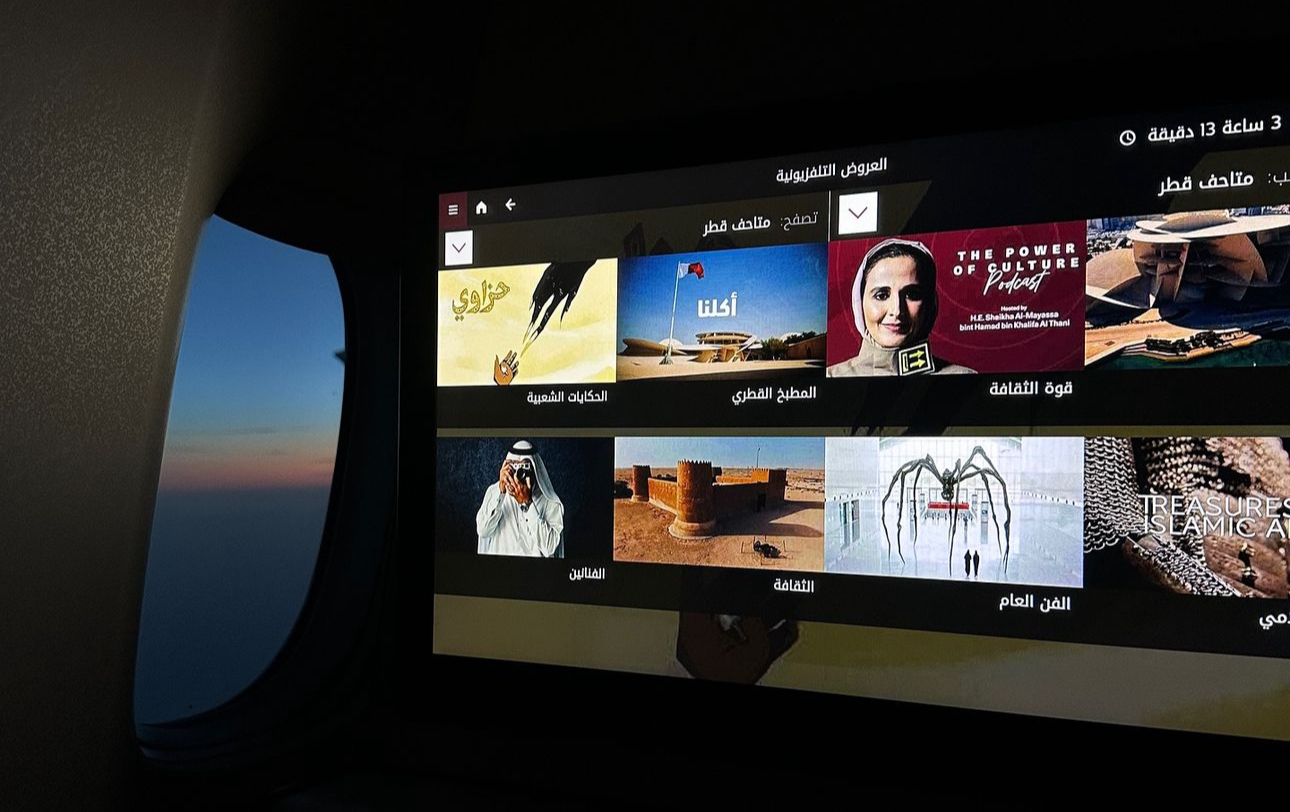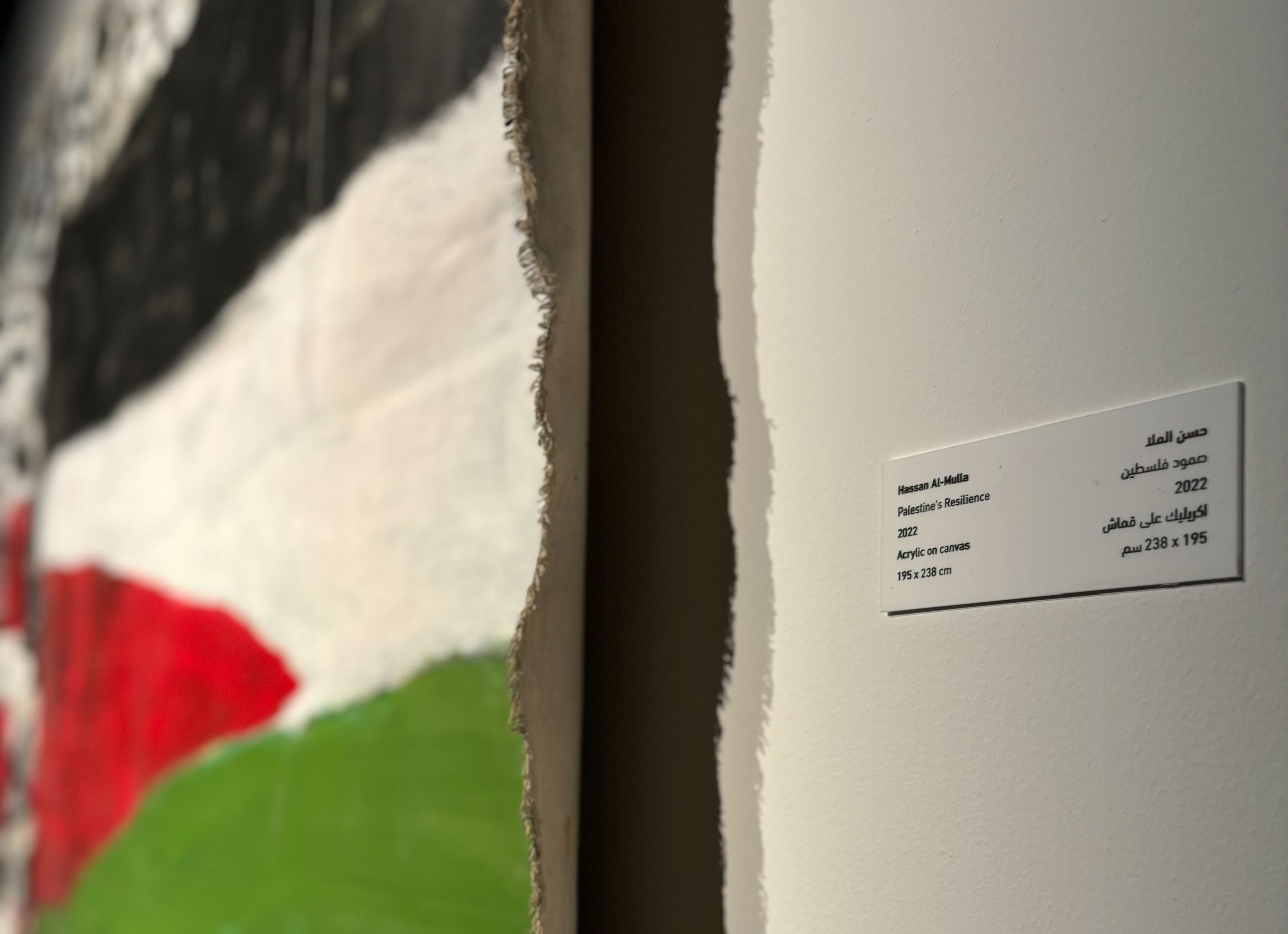
Updated on June 3 with details of the Qatar lawsuit
Translation by Riham Sheble
The parents of 13 children and one nursery teacher who died in the 2012 Villaggio fire have filed multi-million dollar lawsuits against the mall’s architects, developers, consultants and management firm, in addition to several other companies based in the US and Qatar.
The civil suits were filed on Thursday, May 28 – exactly three years after the blaze – with the Los Angeles Superior Court in California, and Qatar’s court of first instance.
The Qatar suit is calling for QR280 million (approximately $77 million) in compensation and damages for each of the victims – significantly more than has been sought in other recent civil cases filed in the state.
The US suit described the continuing operations of the popular mall as a “waking nightmare” for the families.

In all, 19 people died of smoke asphyxiation during the fire, including all the children who were trapped in upstairs daycare Gympanzee at the time, four staff nursery staff and two firefighters who tried to rescue them.
The smoke had spread after a fire broke out in the upstairs storeroom of the adjacent Nike sports shop.
The US lawsuit argues that the companies being sued “engaged in willful, wanton and reckless disregard” for the lives and safety of those who died in the fire.
It alleges wrongful death, negligence, survival action for negligence and negligent infliction of emotional distress on behalf of some of the families of the victims who died.
The US documents do not specify the monetary amount that the families are suing for, but calls on the firms to pay for general and punitive damages.
The suit also seeks compensation for funeral and burial expenses, medical and legal costs and lost earnings for the past, present and future.
‘Fatal mistakes’
The California lawsuit names three defendants: F+A Architects, a Pasadena-based company that designed Villaggio; Business Trading Company (BTC), a Qatar firm that developed and managed the mall operations; and White Young Qatar, described as the project manager and contributing architect and engineer for the mall.
“The fire was a result of numerous fatal mistakes on the part of the defendants,” the suit states.
The action claims that “the fire and the resulting deaths were, by all accounts, preventable” and says that the fire control and suppression systems designed by F+A and White Young “wholly failed” at the time of the fire and its aftermath.
According to an official investigation, Nike employees noticed and failed to put out a fire that began in the mezzanine due to faulty electrical wiring in a fluorescent light, which led to the ignition of its plastics components before spreading to flammable materials.

Civil Defense officers testified during the criminal trial that a highly flammable paint in Villaggio’s decorations caused the fire to spread quickly and made it more difficult to contain.
The officers asserted that the chemical, which Villaggio had been repeatedly fined for using prior to the fire, coupled with smoldering clothes from the Nike store, caused the heavy smoke that spread to the nearby play area, asphyxiating those inside.
Other issues within the mall also hindered rescue operations, the lawsuit said:
“The fans that were intended to remove smoke in the event of a fire instead forced smoke back into the mall. The fire alarms selected by the designers were inaudible or sounded like a faint doorbell. The smoke vents did not function properly, if at all. The sprinkler system failed. The fire hoses in the mall were too short to reach the sporting goods store or Gympanzee. The fire soon raged out of control and poisonous smoke permeated the mall.”
The lawsuit also cited previous court testimony that stated the children and Gympanzee employees were told by BTC staff to remain inside the nursery when the fire broke out; that mall operators didn’t tell firefighters there were children trapped inside the building; and that they were unable to offer a map of the mall or give them a location for the daycare.

The lack of a mall map also delayed fire crews when they attempted to cut through the roof of the mall to try to rescue the trapped children, the lawsuit states.
When responders finally gained access to the mall and nursery, they were too late to save the victims.
Grim scene
A deceased firefighter was found just outside Gympanzee. Some of the children were found tucked inside the shirts of the staffers, including teacher Shameega Charles, who had tried to protect them from the smoke.

Charles’ mother Maryam is cited as one of the plaintiffs in the case.
She was dependent on her daughter to provide for her and her grandson.
“The families have suffered substantial pecuniary and emotional losses, including loss of society, companionship and services,” the suit states.
BTC and its agents, it claims, was responsible for “gross violations of industry standards” relating to the poor operation of the fire and smoke detection and response systems in the mall.
“At all relevant times, defendant BTC negligently maintained and operated the mall so as to create a substantial and unreasonable risk that serious injury or death would result in the foreseeable event of a fire,” the claims states.
The company also failed to properly train its staff to respond appropriately in emergencies, did not ensure its exits were open and kept clear and had not registered Gympanzee as a nursery with the Ministry of Business and Trade (now called Ministry of Economy and Commerce).
Meanwhile, White Young is accused of designing a fire system that was “wholly inadequate” and for selecting interior decoration materials for the mall design made of flammable polysterene. The chemical melted during the fire, was difficult to extinguish and emitted “fast-spreading and toxic smoke,” the suit said.
Qatar case
A total of 12 companies are cited as defendants in the legal documents filed with the Qatar court. In addition to F+A, BTC and White Young, the others being sued are:
- Qatari Company for Real Estate and Commercial Projects, which the suit argues was in charge of sponsoring the mall and was responsible for ensuring the mall was safely designed
- Gympanzee, which is claimed should have registered itself as a nursery and given its employees training in emergency situations;
- Sun and Sands Sports Qatar. This company should have stored its merchandise in a proper and safe manner, used safe light fixtures and maintained its fire protection and control systems, the suit argues;
- Voltas Qatar, the subcontractor said to be responsible for building, designing and maintaining the mall fire systems;
- Qatari Engineer and Assistants Company, said to be the consultant engineer for the mall;
- Intertech Group Ltd, said to be responsible for contracts for internal designs and the fire-resistant internal gypsum designs;
- International for Decorations and Building, which was also claimed to be responsible for internal designs;
- Paint companies Jotun and Hempel, which should have supplied safe, non-flammable, non-toxic paints, the claim argues.
The families are claiming QR165 million (approximately $45 million) per victim in compensation for emotional and material damage, and a further QR115 million (approximately $31 million) per victim for the suffering of those who died.
The Qatar suit argues that “no one would have died had everyone carried out their duty” and that the deaths happened because of “human mistakes resulting from laziness, negligence and the desire to cut corners and save expenses”.
Current proceedings
The civil lawsuits come at a time when criminal court proceedings may finally be wrapping up.
Following a trial, five of seven defendants – including two mall officials, a government employee and the owners of the Gympanzee daycare – were found guilty of manslaughter in June 2013 and face five to six years in jail.
However, they remain out of prison pending an appeal hearing, which has taken nearly two years and is due to close this month. A verdict may not be issued until after the summer recess.
Some of the families have previously initiated civil proceedings in Qatar against the defendants to collect blood money compensation, but the majority of these claims have been frozen pending the outcome of the criminal case.
Thoughts?







